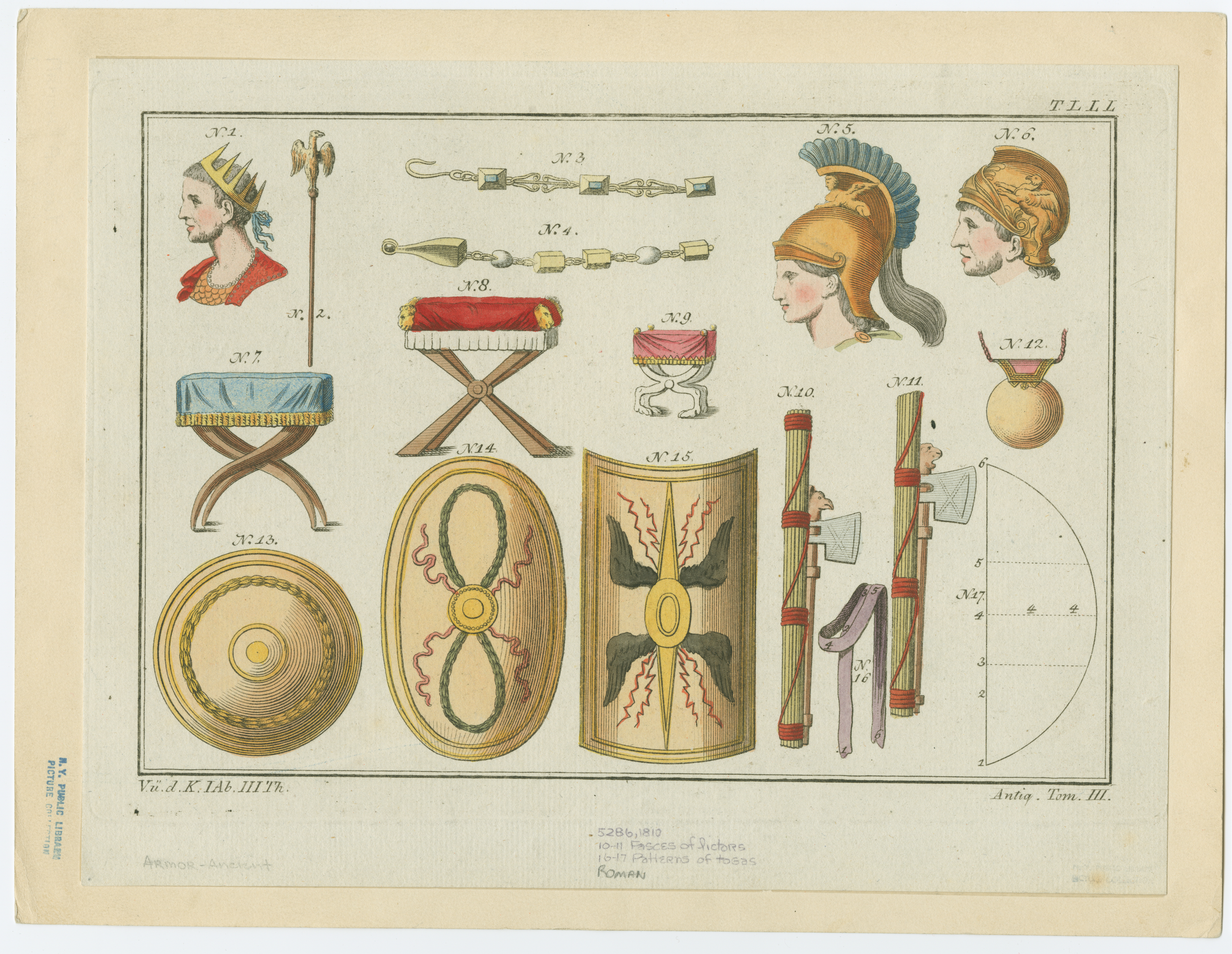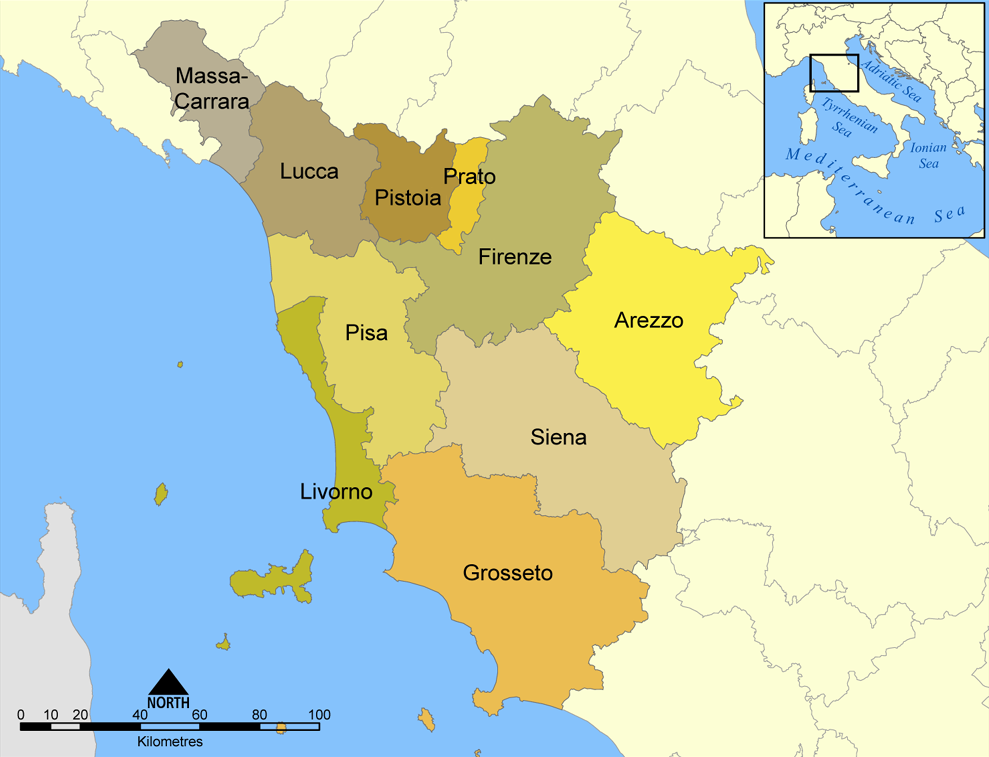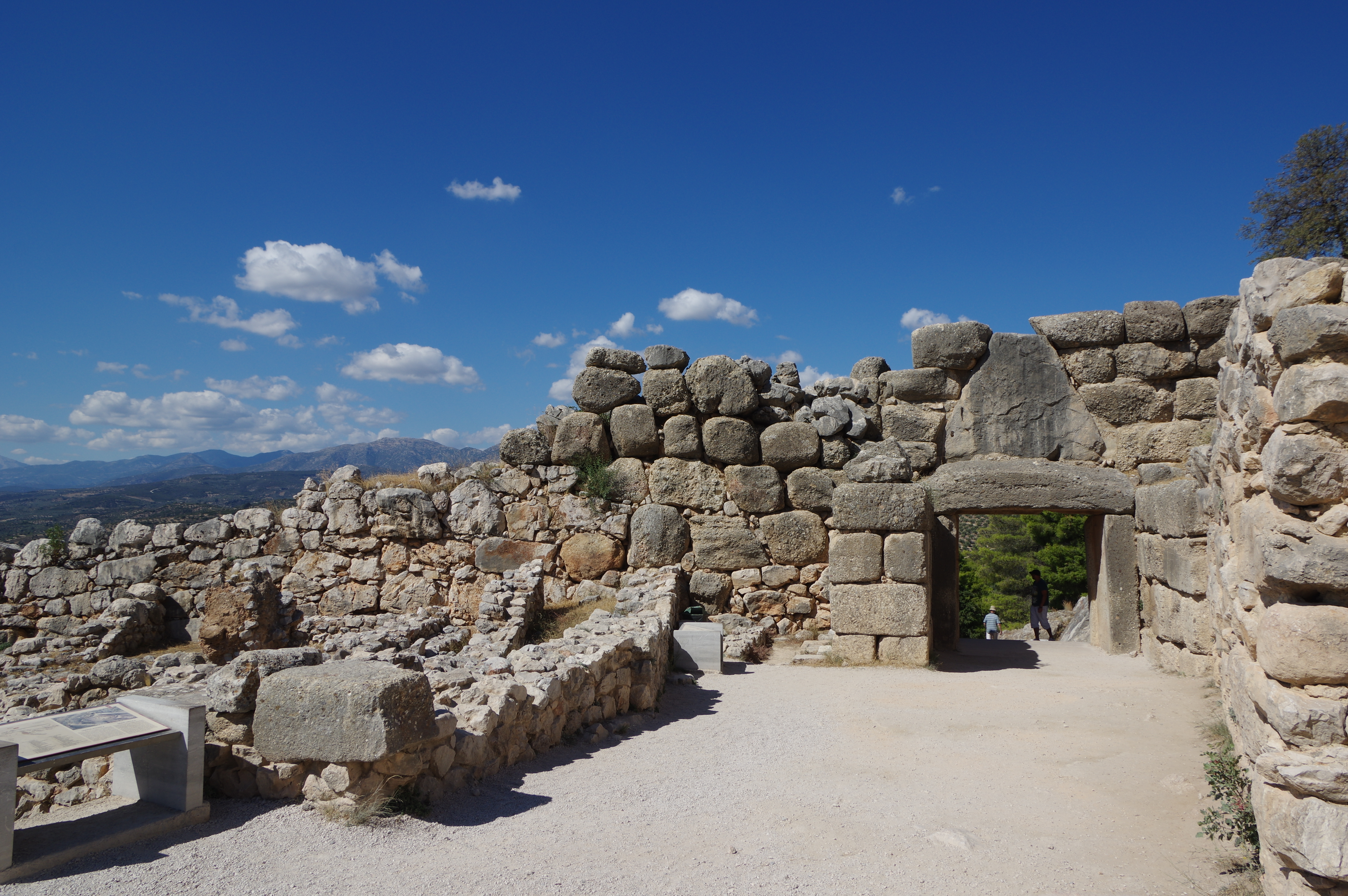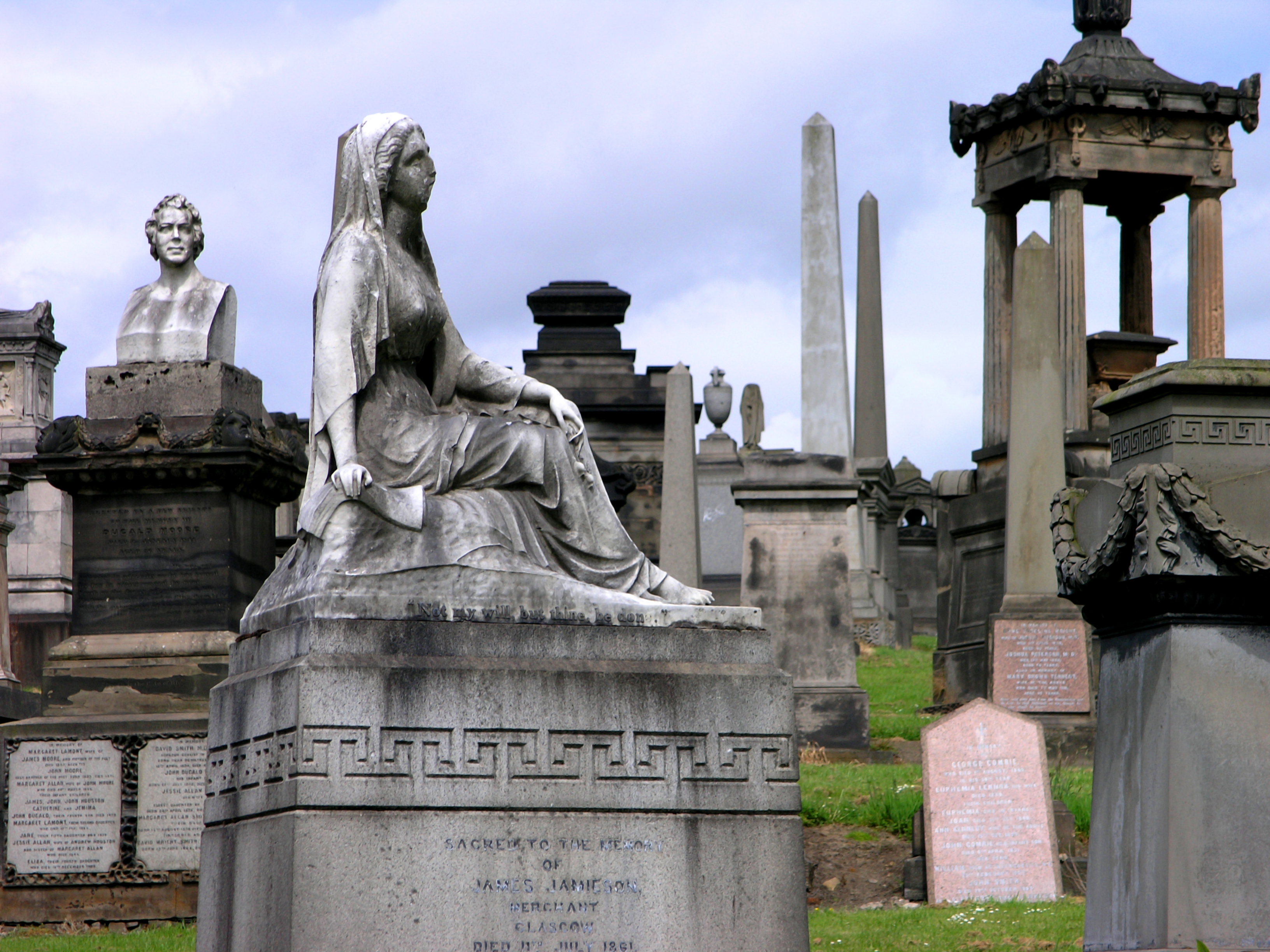|
Vetulonia
Vetulonia, formerly called Vetulonium ( Etruscan: ''Vatluna''), was an ancient town of Etruria, Italy, the site of which is probably occupied by the modern village of Vetulonia, which up to 1887 bore the name of Colonnata and Colonna di Buriano: the site is currently a ''frazione'' of the comune of Castiglione della Pescaia (province of Grosseto) with some 400 inhabitants. It lies 300m above sea level, about ten miles directly northwest of Grosseto, on the northeast side of the hills which project from the flat Maremma and form the promontory of Castiglione. History and main sights Vetulonia has Etruscan origins. It was, by 600 BC, part of the Etruscan League of twelve cities. Dionysius of Halicarnassus places the city within the Latin alliance against Rome in the seventh century BC. According to Silius Italicus (''Punica'' VIII.485ff), the Romans adopted their magisterial insignia, the Lictors' rods and fasces and the curule seat, from Vetulonia; in 1898, a tomb in t ... [...More Info...] [...Related Items...] OR: [Wikipedia] [Google] [Baidu] |
Castiglione Della Pescaia
Castiglione della Pescaia (; abbreviated by locals as Castiglione or Castiglioni), is an ancient seaside town in the province of Grosseto, in Tuscany, central Italy. The modern town grew around a medieval 12th century fortress () and a large fishery, from which it acquired its designation. Today Castiglione is a very popular tourist destination with attractions that include beaches, natural parks, biking trails, historical Etruscan archaeological sites, a panoramic mediaeval hamlet as well as the natural reserve ''Diaccia Botrona'', a swampy humid environment of historical relevance whose endangered wildlife comprise pink flamingoes, mallards and ducks. Castiglione della Pescaia is home to the second most expensive street in Italy for property prices, with average values exceeding those of homes in every other Italian street except one, also in Tuscany. Geography Castiglione della Pescaia consists of a High City built on the hill that ends a chain of hills towards the sea, an ... [...More Info...] [...Related Items...] OR: [Wikipedia] [Google] [Baidu] |
Fasces
A fasces ( ; ; a , from the Latin word , meaning 'bundle'; ) is a bound bundle of wooden rods, often but not always including an axe (occasionally two axes) with its blade emerging. The fasces is an Italian symbol that had its origin in the Etruscan civilization and was passed on to ancient Rome, where it symbolized a King of Rome, Roman king's power to punish his subjects, and later, a magistrate's Power (social and political), power and jurisdiction. The axe has its own separate and older origin. Initially associated with the labrys (; ), the double-Axe#Parts of the axe, bitted axe originally from Crete, is one of the oldest symbols of Greek civilization. The image of fasces has survived in the modern world as a representation of magisterial power, law, and governance. The fasces frequently occurs as a Charge (heraldry), charge in heraldry: it is present on the reverse of the U.S. Mercury dime coin and behind the podium in the United States House of Representatives and in the Se ... [...More Info...] [...Related Items...] OR: [Wikipedia] [Google] [Baidu] |
Seguenzioidea
Seguenzioidea is a family (biology), superfamily of sea snails, marine (ocean), marine gastropod mollusks in the clade Vetigastropoda.Gofas, S. (2010). Seguenzioidea. In: Bouchet, P.; Gofas, S.; Rosenberg, G. (2010) World Marine Mollusca database. Accessed through: World Register of Marine Species at http://www.marinespecies.org/aphia.php?p=taxdetails&id=224565 on 2011-01-09 Description The distinctive characteristics of the shells of the Seguenzioidea are: * the nacreous layer (a plesiomorphic character, i.e. a character state that a taxon is inferred to have been retained from its ancestors) This occurs also in the following families: Pleurotomariidae, Haliotidae, Turbinidae, Trochidae, and possibly in the Skeneidae. * the protoconch has a trochoid shape. * usually with one or more labral sinuses. This character is also found is several other superfamilies such as Neomphaloidea, Pleurotomarioidea, Fissurelloidea, and Scissurelloidea and in the families Siliquariidae and Turrid ... [...More Info...] [...Related Items...] OR: [Wikipedia] [Google] [Baidu] |
Grosseto
Grosseto () is a city and a ''comune'' in the central Italian region of Tuscany, the capital of the province of Grosseto and the main city of the Maremma region. The city lies from the Tyrrhenian Sea, at the centre of an alluvial plain on the Ombrone river. It is the most populous city in Maremma, with 82,284 inhabitants. The comune of Grosseto includes the ''frazioni'' of Marina di Grosseto, the largest one, Roselle, Principina a Mare, Principina Terra, Montepescali, Braccagni, Istia d'Ombrone, Batignano, Alberese and Rispescia. History The origins of Grosseto can be traced back to the High Middle Ages. It was first mentioned in 803 as a fief of the Counts Aldobrandeschi, in a document recording the assignment of St. George's Church to Ildebrando degli Aldobrandeschi, whose successors were counts of the Grossetana Mark until the end of the 12th century. Grosseto steadily grew in importance, owing to the decline of Rusellae and Vetulonia until it was one of the princip ... [...More Info...] [...Related Items...] OR: [Wikipedia] [Google] [Baidu] |
Etruscan Civilization
The Etruscan civilization ( ) was an ancient civilization created by the Etruscans, a people who inhabited Etruria in List of ancient peoples of Italy, ancient Italy, with a common language and culture, and formed a federation of city-states. After adjacent lands had been conquered its territory covered, at its greatest extent, roughly what is now Tuscany, western Umbria and northern Lazio, as well as what are now the Po Valley, Emilia-Romagna, south-eastern Lombardy, southern Veneto and western Campania. A large body of literature has flourished on the origins of the Etruscans, but the consensus among modern scholars is that the Etruscans were an indigenous population. The earliest evidence of a culture that is identifiably Etruscan dates from about 900 BC. This is the period of the Iron Age Villanovan culture, considered to be the earliest phase of Etruscan civilization, which itself developed from the previous late Bronze Age Proto-Villanovan culture in the same region, p ... [...More Info...] [...Related Items...] OR: [Wikipedia] [Google] [Baidu] |
Province Of Grosseto
The province of Grosseto () is a Provinces of Italy, province in the Tuscany region of Italy. Its capital is the city of Grosseto. As of 2013 the province had a total population of 225,098 people. Geography The Province of Grosseto completely occupies the southern end of Tuscany, and with a territorial area of , it is the most extensive in the region and one of the least dense in population in Italy. The province is bordered to the northwest by the Province of Livorno, to the north by the Province of Pisa, to the northeast by the Province of Siena, and to the southeast by the Province of Viterbo in Lazio. To the south is the Tyrrhenian Sea, which includes the southern islands of the Tuscan archipelago, including Isola del Giglio and the smaller Giannutri islands and Formiche di Grosseto and Formica di Burano. The Arcipelago Toscano National Park spans both the provinces of Grosseto and Livorno, and includes the seven main islands of the Tuscan Archipelago: Elba, Isola del Gigl ... [...More Info...] [...Related Items...] OR: [Wikipedia] [Google] [Baidu] |
Etruscan Language
Etruscan ( ) was the language of the Etruscan civilization in the ancient region of Etruria, in Etruria Padana and Etruria Campana in what is now Italy. Etruscan influenced Latin but was eventually superseded by it. Around 13,000 Etruscan epigraphy, inscriptions have been found so far, only a small minority of which are of significant length; some bilingual inscriptions with texts also in Latin, Ancient Greek, Greek, or Phoenician language, Phoenician; and a few dozen purported loanwords. Attested from 700 BC to AD 50, the relation of Etruscan to other languages has been a source of long-running speculation and study. Nowadays, it is generally agreed to be in the Tyrsenian language family, but before it gained currency as one of the Tyrsenian languages, it was commonly treated as an Language isolate, isolate, although there were also a number of other less well-known hypotheses. The consensus among linguists and Etruscologists is that Etruscan was a Pre-Indo-European languages, Pre ... [...More Info...] [...Related Items...] OR: [Wikipedia] [Google] [Baidu] |
Etruria
Etruria ( ) was a region of Central Italy delimited by the rivers Arno and Tiber, an area that covered what is now most of Tuscany, northern Lazio, and north-western Umbria. It was inhabited by the Etruscans, an ancient civilization that flourished in the area from around the 8th century BC until they were assimilated into the Roman Republic in the 4th century BC. Etruscan Etruria The ancient people of Etruria are identified as Etruscans. Their complex culture centered on numerous city-states that arose during the Villanovan period in the ninth century BC, and they were very powerful during the Orientalizing Archaic periods. The Etruscans were a dominant culture in Italy by 650 BC,Rix, Helmut. "Etruscan." In ''The Ancient Languages of Europe,'' ed. Roger D. Woodard. Cambridge University Press, 2008, pp. 141–164. surpassing other ancient Italic peoples such as the Ligures. Their influence may be seen beyond Etruria's confines in the Po River Valley and Latium, as wel ... [...More Info...] [...Related Items...] OR: [Wikipedia] [Google] [Baidu] |
Cyclopean Masonry
Cyclopean masonry is a type of stonework found in Mycenaean architecture, built with massive limestone boulders, roughly fitted together with minimal clearance between adjacent stones and with clay mortar or no use of mortar. The boulders typically seem unworked, but some may have been worked roughly with a hammer and the gaps between boulders filled in with smaller chunks of limestone. The most famous examples of Cyclopean masonry are found in the walls of Mycenae and Tiryns, and the style is characteristic of Mycenaean fortifications. Similar styles of stonework are found in other cultures and the term has come to be used to describe typical stonework of this sort. The term comes from the belief of classical Greeks that only the mythical Cyclopes had the strength to move the enormous boulders that made up the walls of Mycenae and Tiryns. Pliny's ''Natural History'' reported the tradition, attributed to Aristotle, that the Cyclopes were the inventors of masonry towers, giving ... [...More Info...] [...Related Items...] OR: [Wikipedia] [Google] [Baidu] |
Necropolis
A necropolis (: necropolises, necropoles, necropoleis, necropoli) is a large, designed cemetery with elaborate tomb monuments. The name stems from the Ancient Greek ''nekropolis'' (). The term usually implies a separate burial site at a distance from a city, as opposed to tombs within cities, which were common in various places and periods of history. They are different from grave fields, which did not have structures or markers above the ground. While the word is most commonly used for ancient sites, the name was revived in the early 19th century and applied to planned city cemeteries, such as the Glasgow Necropolis. In the ancient world Egypt Ancient Egypt is noted for multiple necropoleis and they are major archaeological sites for Egyptology.. Ancient Egyptian funerary practices and beliefs about the afterlife led to the construction of several extensive necropoleis to secure and provision the dead in the hereafter. Probably the best-known one is the Giza Necropolis. ... [...More Info...] [...Related Items...] OR: [Wikipedia] [Google] [Baidu] |
Magistrate
The term magistrate is used in a variety of systems of governments and laws to refer to a civilian officer who administers the law. In ancient Rome, a '' magistratus'' was one of the highest ranking government officers, and possessed both judicial and executive powers. In other parts of the world, such as China, magistrate is a word applied to a person responsible for administration over a particular geographic area. Today, in some jurisdictions, a magistrate is a judicial officer who hears cases in a lower court, and typically deals with more minor or preliminary matters. In other jurisdictions (e.g., England and Wales), magistrates are typically trained volunteers appointed to deal with criminal and civil matters in their local areas. Original meaning In ancient Rome, the word '' magistratus'' referred to one of the highest offices of state. Analogous offices in the local authorities, such as '' municipium'', were subordinate only to the legislature of which they generally ... [...More Info...] [...Related Items...] OR: [Wikipedia] [Google] [Baidu] |









